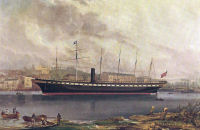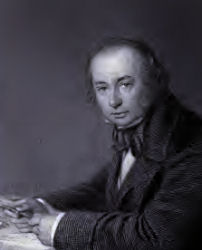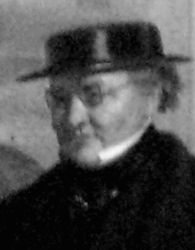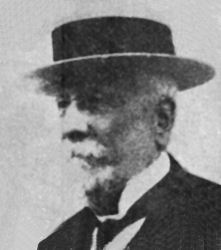From
Slaves to Sleepers | | | The
dark saga behind the Steamship Great Britain | EXTRACTS
FROM AN E-BOOK BY TONY MORRISON NOW IN PRODUCTION BY NONESUCH EXPEDTIONS |
|
| 1969
- a card arrived from Bristol's time honoured Society of Merchant Venturers | |
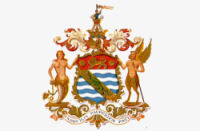 |
The
Board of Directors of the Great Western Steam-Ship Company and those concerned
with the building and planning
the SS Great Britain |
|
| Peter
Maze, Chairman, Thomas Kington, Deputy Chairman, Captain Claxton RN, Managing
Director, Henry Bush, Robert Scott, T.B.Ware, Thomas Pyecroft, T.R.Guppy - IK
Brunel, consulting engineer, W. Patterson, shipbuilder , Osborne & Ward, solicitors.
Both Peter Maze and Henry Bush were at one time appointed Master of the Society
of Merchant Venturers | | | |
| |
|
|
|
| The
man of vision |
The
brilliant shipbuilder |
The
firebrand fixer |
The
engineer and inventor |
Isambard
Kingdom Brunel
The
consulting engineer and visionary who persuaded wealthy men to back his schemes.
Less than six years after beginning projects in Bristol he totted up his financial
success in his diary. The total amounted to £5,320.000 which today would
be about (234, 612,000GBP) and he wrote " A pretty considerable capital
likely to pass through my hands - and this at the age of 29". While today
Brunel is hailed as a great engineer, the 19th century Press was not so kind.
|
William
Patterson Born
in poverty in Scotland in 1795 Patterson grew up with shipbuilding in London,
first as apprentice then foreman. He moved to Bristol where he became a shipbuilder
with his own yard and quickly gained a reputation. One of his friends was Christopher
Claxton an ex-Royal Navy lieutenant who held the position of Quay Warden [Harbour
Master]. Patterson built the Great Western Steamship Company's first vessel -
the Great Western and he designed the hull of the Steam-Ship Great Britain.
In 1851 he completed the Demerara that had the misfortune to hit rocks
in Bristol's Avon gorge. |
Christopher
Claxton
The Managing Director was often seen in the Press as the Hon. Secretary. Claxton
was a robust political speaker from one of Bristol's slaving families. He railed
at the slaves - Black Africans, the Quakers who supported the abolition of slavery
and Jews. In the 1830 Bristol election for parliamentary representatives Claxton
offered to fight a pistol duel with John Hare the agent of the young Edward Protheroe
who was running on an anti-slavery ticket. The Protheroe and Claxton familes were
related and their names live on in the old Caribbean plantation islands of St.
Kitts and Nevis. |
Thomas
Richard Guppy A
very wealthy Bristolian.
from a family whose fortune was based on copper and sugar, both spin-offs from
the 18th Century slave trade. Guppy took after his mother who was an inventor
with numerous patents to her credit. Guppy's design features for the Steam-Ship
Great Britain were patented in 1843 and his drawings are the only detailed
engineering plans for the ship. He arranged for them to be published and at the
last minute never completed the book. The publisher had to issue an apology to
subscribers | 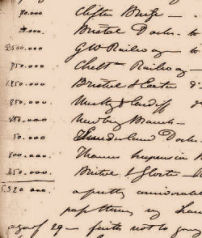 | 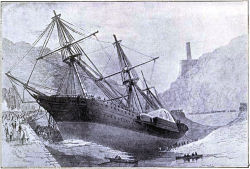 | 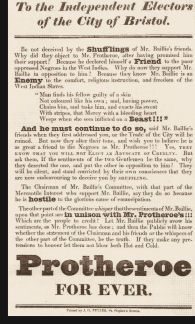 |  |
|
| Great
names indeed.... but now it is time for another story |  | | The
first published account
of the Steam-Ship Great Britain was in 1842. It was written and presumably illustrated
by J.R. Hill whose address was in Chancery Lane, London,England. Hill made his
measurements using a measuring stick. Similar drawings were published two years
later in Christopher Claxton's book The Steam-ship Great Britain. [Bristol
and New York] and will be available here in this Nonesuch book This
digital version of the magazine is searchable and the only reference to ' Brunel
'is to Sir Marc Brunel, I K Brunel's father whose patented engine design was the
basis for the Great Britain's engines. Thomas Guppy is also mentioned but
there are no references to Christopher Claxton or William Patterson. |
| 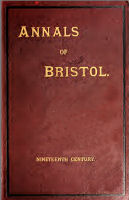 | | 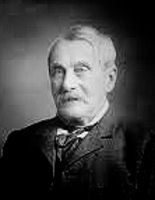 | The
Annals of Bristol were published as s of five books. Today the originals
are expensive but Print on Demand and e-versions are available. John Latimer the
author is widely regarded as the great historian of Bristol though some of his
comments may be contested. Latimer was Editor of the Liberal leaning Bristol
Mercury from 1858-1883. Both the Annals and newspaper are searchable online. The
Annals of the 19th Century
e-book is taken from the original contains over 500 pages so the extracts here
are limited to places where the names Brunel, Patterson, Claxton and Guppy appear.
When searching for Brunel we suggest use Brunei as some 19th century
fonts for 'l' are not picked up - use 'i' and it works. You will
find a similar problem on the full e-book if you go to the Internet Archive. |
|  | Who
paid the bills and who lost money? | 1844
and at anchor ready for work the Steam-Ship Great Britain had cost
the Great Western Steam-Ship Company [GWSC] £117,295, six shillings and
seven pence - to this had to be added a further £53,081, 12 shillings and
ninepence for the buiding works and dock plus another £1,330, four shillings
and ninepence for the alteration to locks in Bristol's floating harbour. A grand
total of approximately 7,572,278 GBP today. When the ship was sold as a wreck
to the Falkland Islands Company in 1886 the value had dropped to £3000 or
179,670 GBP [2010] Between
the two figures lay 42 years of life, countless thousands of Pounds spent on modifications,
at least one company, the Great Western Steam-ship Company wound up and all assets
sold, a suspected suicide of one captain the walk-out of another. | | Money
conversion by the Currency Converter -The National Archives, Kew, Richmond,England | | The
extraordinary financing of the Steam-ship Great Britain | Leigh
Court is a grand mansion set in wooded parkland on the Somerset side of the
river Avon 6 kms from the dock in Bristol. A
tudor house in the park was demolished in 1812 and 1814 Miles built the present
very imposing house. The Miles family fortunes came from West Indian sugar, shipping
and banking. At one time the house contained a fine collection of paintings by
'old masters'. | Bristol
Money backed the project and no better example of its power could be seen
than on Wednesday July 19th 1843 the day of 'The Floating' or launch of the ship.
Prince Albert of Saxe-Coburg Gotha, consort of Queen Victoria, the reigning monarch
of Great Britain and Ireland consented to attend the event. It was a wonderfully
festive occasion for the city and the Prince arrived from London by a train on
the newly completed Great Western Railway. The steam locomotive Damon was conducted
by IK Brunel and his friend Daniel Gooch. Several
descriptions of The Floating have been passed down. The most amusing version suggests
the traditional bottle of champagne was dropped and a second bottle was needed.
But on Saturday July 22nd 1843 just three days after the ' Floating' the Bristol
Mercury published a special supplement reporting the momentous occasion. The
report may have been 'massaged' to avoid embarrasssing Prince Albert but according
the the Mercury the bottle was passed by the Prince to a 'Mrs Miles' who
smashed it against the ship while saying 'The Great Britain'. Mrs
Miles - Bristolians of the 1800s would have known her by name as she was the
wife of a director of a major Bristol bank usually known as Miles Bank. Her full
name was Clarissa Miles and she was the second wife of Philip John Miles from
what was reputedly Bristol's wealthiest family and also, reputedly, Philip was
Bristol's first millionaire - which bearing in mind the value of money in those
times was a very healthy stash of cash. No
wonder that Clarissa and Philip were seated at the top table alongside the Prince
and hosted by their close friend Thomas Kington.
Forty eight year old Thomas Kington was the deputy director of the GWSC, a Somerset
landowner, Bristol ship-owner, merchant and trading partner of Philip Miles. Prince
Albert was sitting on his right while the likes of Thomas Guppy, Christopher Claxton
and his wife, IK Brunel and his father Sir Marc were at a lesser table. IK Brunel
who is so well known today was not even involved when the Prince was taken on
a tour of the ship - that honour was in the hands of Guppy and Claxton. Was it
a snub or simply a reflection of his part in the construction of the ship? The
Bristol Mercury - Saturday July 22nd 1843 covers the 'floating' or launch. | | | The
story of the money will continue... Bristol was awash with cash as the British
Government in London had just paid twenty million pounds to slave owners as compensation
for their loss when slavery was outlawed in 1807 and in 1833 abolished across
most of the British Empire. Bristol slave owners received £500,000 of the
pay-out and as one writer has said ' they had a broad willigness to replace
slaves by sleepers' and invest in the new 19th century industry.[the
sleepers of railway tracks or 'railroad-ties']. Philip Miles and Thomas Kington
were among the winners to the tune of around £36,000.00 - or £1.6
million GBP [2012]. There's little wonder that they were at the top table. | | Bristol
and the Abolition of Slavery, Professor Peter [James] Marshall, 1975, University
of Bristol |
| | | AND
MORE AND MORE ... in the book......... |
|
|
| The
text and most of the images are © Copyright |
| For
any commercial use please contact | | |
| THE
NONESUCH - FLOWER OF BRISTOL |
| AN
EMBLEM FOR ENTERPRISE | | |
|

